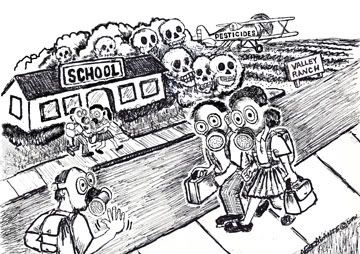John Fensterwald has a great story in the Educated Guess about what the parents in Cupertino are facing for their children. The district is K-8 only, and as the area is pretty wealthy, and fairly progressive, they’ve been able to pass a couple of parcel taxes for the district. In fact, last year they passed one for $4 million. But, that’s not going to be enough:
But now this K-8 Silicon Valley district, home of Apple Computer and some of the highest performing schools in the state, is facing a $9 million deficit for next year. And that’s putting in jeopardy many of the programs parents consider essential: small classes, summer school, the GATE program for gifted children, librarians.
*** *** ***
To that end, the Cupertino Educational Endowment Foundation is asking parents to help put an initiative on the November ballot that would lower the threshold for passing a parcel tax from two-thirds to 55 percent to make it easier to pass the next parcel tax. And organizers are asking every family to donate $375 toward a goal of $3 million to keep small classes in grades one to three while saving 105 teachers who’ve been told they’ll otherwise lose their jobs.
Even in a place like Cupertino, where the district has always been able to find a way, there just aren’t the answers that there used to be. Sacramento has cut them out at the knees, and they’re trying to recover the best they can. Will Cupertino still have decent schools come next year? Probably, but if even the so-called “rich districts” are struggling to make ends meet, what does that say for the districts that are dependent upon the state?
If Meg Whitman wants to talk about too much state spending, how about she actually takes a look at our schools? You know, because hers went to private school, she’s not so familiar. And with each cut, with each lost resource, times become harder.
I have a friend who teaches at a public school in San Leandro. It’s a working class area these days, and the economy has hit the community pretty hard. Students are coming to school completely without supplies, and the districts simply don’t have the money to pay for everything. But, the teachers aren’t going to let the kids sit there with no pencil, and they end up footing the bill. While the Right wants to talk about how teachers are so spoiled, the fact is that they aren’t exactly making Kingly ransoms. And honestly, I can’t think of a profession that deserves every cent they earn more than teachers. But, even with that being said, teachers are being forced into spending hundreds of dollars each semester to provide simple school supplies for their classrooms.
This isn’t right.

